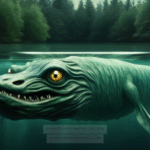Do Near-Death Experiences Reveal Evidence of Consciousness Beyond Clinical Death?
Do Near-Death Experiences Reveal Evidence of Consciousness Beyond Clinical Death?
The phenomenon of Near-Death Experiences (NDEs) captivates both the curious and the skeptical, raising profound questions about the nature of consciousness and what, if anything, lies beyond death. This inquiry is not merely academic; it touches on the very foundations of human existence and spirituality. Understanding NDEs can potentially reshape our views on life, death, and what comes after. But what do these experiences reveal about consciousness after clinical death? In this comprehensive analysis, we will explore the nuances, implications, and ongoing debates surrounding this enigmatic topic.
The Historical Context of Near-Death Experiences
Near-Death Experiences have been documented throughout history, with accounts appearing in various cultures and religions. Ancient texts, such as the Tibetan Book of the Dead, describe experiences similar to modern NDEs, suggesting that this phenomenon may not be a recent discovery but rather a timeless aspect of human experience.
In the late 20th century, the term “Near-Death Experience” gained popularity, thanks in large part to Dr. Raymond Moody’s groundbreaking book, “Life After Life” (1975), where he compiled numerous accounts of individuals who had experienced NDEs. These accounts often include elements such as moving through a tunnel, encountering bright lights, and meeting deceased loved ones, leading many to speculate on their implications for life after death.
Core Concepts: What Constitutes a Near-Death Experience?
A Near-Death Experience is generally defined as a profound psychological event that may occur to individuals when they are close to death or in situations of intense physical or emotional distress. There are several core components that many individuals report during NDEs, including:
- Out-of-body experiences: Individuals often describe a sensation of floating above their bodies and observing medical procedures or their surroundings.
- Meeting deceased individuals: Many report encounters with friends, family members, or spiritual beings.
- Moving through a tunnel: The sensation of moving through a dark tunnel towards a bright light is commonly cited.
- Life review: Some individuals experience a rapid review of their lives, witnessing significant events and their emotional impacts.
- Feelings of peace: A profound sense of calm and acceptance often accompanies these experiences.
The consistency of these elements across diverse cultures and individuals raises intriguing questions about the nature of consciousness and its potential survival beyond physical death.
Scientific Research and Evidence
Numerous studies have sought to analyze NDEs from a scientific perspective. A notable project is the AWARE study (AWAreness during REsuscitation), which was conducted by Dr. Sam Parnia and his colleagues. The study aimed to investigate the experiences of cardiac arrest patients who were resuscitated. Among its findings, the research highlighted that some individuals reported detailed perceptions during moments when they were clinically dead.
One compelling case from the AWARE study involved a patient who accurately described events occurring in the operating room while their heart had stopped. This raises critical questions: if consciousness ceases with brain activity, how could this individual have perceived their surroundings? Such evidence suggests that consciousness may have a different relationship with the brain than previously understood.
Practical Implications of NDEs
The implications of understanding NDEs extend beyond philosophical musings; they can significantly affect how we approach death and dying. For healthcare professionals, recognizing that patients may have subjective experiences during life-threatening situations can influence how they provide care. It encourages a more compassionate approach to end-of-life care and highlights the importance of emotional and spiritual support.
Moreover, NDEs can offer comfort to those grieving the loss of loved ones. Many individuals who have experienced NDEs report returning with a renewed sense of purpose and a diminished fear of death, fostering resilience in both themselves and their families.
Alternative Perspectives: Skepticism and Criticism
Despite the compelling nature of NDEs, skepticism remains prevalent. Critics argue that these experiences can be explained by physiological and psychological factors, such as brain chemistry, oxygen deprivation, or the brain’s natural response to trauma. For instance, the release of endorphins during extreme stress may create feelings of euphoria or detachment.
Additionally, some researchers assert that the consistency of NDE reports is a product of cultural influences and shared narratives rather than evidence of an afterlife. They highlight that various cultures interpret similar experiences through their unique spiritual or religious lenses, suggesting that NDEs may reflect learned expectations rather than universal truths.
Common Misconceptions About NDEs
Several misconceptions surround the topic of NDEs, often stemming from misunderstandings or sensationalized portrayals in media. Some of the most prevalent include:
- All NDEs are positive: While many report uplifting experiences, others describe distressing or frightening encounters, known as “negative NDEs.”
- NDEs are universal: Although similar elements are reported, not everyone who undergoes a life-threatening experience reports an NDE.
- NDEs prove the existence of an afterlife: While compelling, NDEs do not constitute irrefutable evidence of life after death; they remain subjective experiences.
Clarifying these misconceptions is essential for fostering a more nuanced understanding of NDEs and their implications.
Best Practices for Investigating NDEs
For those interested in investigating Near-Death Experiences, a thoughtful and open-minded approach is essential. Here are some best practices:
- Listen without judgment: When discussing NDEs with individuals, create a safe space for sharing experiences without skepticism.
- Review credible research: Familiarize yourself with academic studies and literature on NDEs, distinguishing between anecdotal evidence and empirical research.
- Explore interdisciplinary perspectives: NDEs can be examined through various lenses, including psychology, neuroscience, and spirituality, providing a holistic understanding.
- Engage with individuals: Interacting with those who have experienced NDEs can provide invaluable insights into the phenomenon.
Future Developments in NDE Research
The field of NDE research is evolving, with ongoing studies delving into the intricacies of consciousness, brain activity, and the subjective nature of experiences. As neuroscience advances, there may be more sophisticated tools to explore the neural correlates of NDEs and consciousness.
Emerging technologies, such as virtual reality, may also provide new avenues for understanding these experiences by simulating NDE-like scenarios and observing participants’ responses. Additionally, interdisciplinary collaborations between scientists, philosophers, and spiritual leaders may pave the way for an enriched understanding of consciousness and the afterlife.
Conclusion: The Enigmatic Nature of Near-Death Experiences
Near-Death Experiences remain one of the most fascinating and perplexing phenomena in the study of consciousness and spirituality. While empirical evidence continues to emerge, the subjective nature of these experiences complicates our understanding. From historical accounts to modern scientific inquiries, NDEs challenge our perceptions of life, death, and what may lie beyond. As research progresses, we may inch closer to unraveling this enduring mystery, shedding light on the profound questions of consciousness and existence itself.
Other Articles
Recent Posts
- What Happened to Flight MH370? The Conspiracy Theories That Still Haunt Us
- What Secrets Lurk Within the Walls of the Infamous Trans-Allegheny Lunatic Asylum?
- What Evidence Supports the Existence of Bigfoot in the Pacific Northwest?
- What Happened to the Indus Valley Civilization? Unraveling the Mysteries of Ancient Urban Life
- Can Telepathy Be Scientifically Proven Through Laboratory Evidence?







